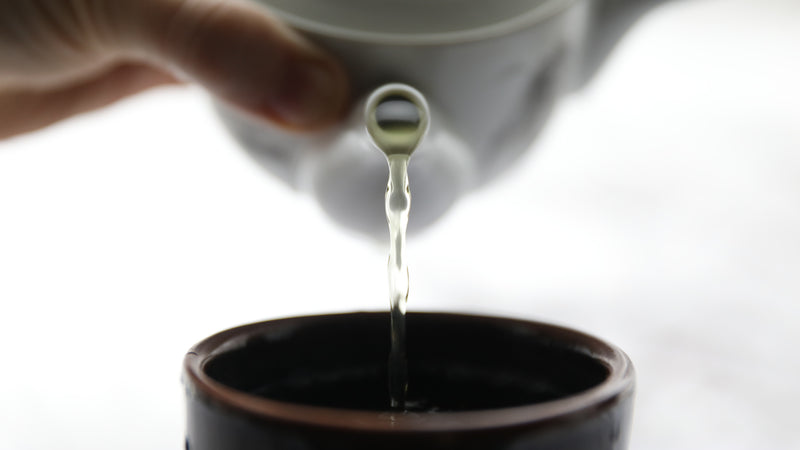
When exploring the world of premium teas, you might often encounter the term "umami," but what exactly is it? Here we will try to break down this somewhat mysterious word.
The term umami is originally Japanese; however, nowadays it is so well-known in the Western world that it is not rare to find it used on product labels, menus, food articles, and the like. It is also common to encounter this word in the tea-drinking community, with Japanese teas especially containing a high level of umami.
What is Umami?
Umami is known as the fifth taste, joining sweet, sour, salty, and bitter. It is a primary, or basic taste that adds depth and richness to our culinary experiences. The word umami translates to “delicious” in Japanese, and it typically evokes a flavor profile that is savory, smooth, and satisfying. This taste is often described as a pleasant mouthfeel that lingers, making it particularly memorable.

How to Recognize Umami
Recognizing umami in tea, especially in quality blends like those from Ekön Tea. Identifying umami in teas can be challenging, but there are a few characteristics that can help:
-
Palate Sensation: Umami often feels smooth and rounded, as opposed to the sharper tastes of sour or bitter. It offers a base flavor that can enhance the overall experience of drinking tea.
-
Flavor Balance: In tea, umami serves to complement and balance out bitter and astringent notes. This harmony is crucial for appreciating high-quality teas, where umami can soften and enrich the drinking experience.
-
Texture and Complexity: Teas with a strong umami presence often have a richer, more complex texture. You might notice a creamy or velvety mouthfeel that enhances the pleasure of each sip.
-
Lingering Finish: Umami flavors tend to leave a lasting impression on the palate, providing a satisfying aftertaste that can prolong the enjoyment of the tea.
The Role of Teanine in Umami Flavor
The secret to the umami taste in tea lies in an amino acid called theanine. Found almost exclusively in tea leaves, theanine is particularly concentrated in the young shoots and leaves of the Camellia sinensis plant. This amino acid plays a crucial role in creating the umami flavor, providing a savory and delicate taste that balances the bitterness and astringency of the tea’s polyphenols.

-
High Concentration in Young Leaves: The youngest leaves and buds contain significantly higher levels of theanine compared to mature leaves. Theanine is synthesized in the roots and transported to the upper leaves, where it accumulates during the early growth stages.
-
Impact on Umami Flavor: The high theanine content in these young leaves contributes to a smooth, umami flavor. This taste contrasts with the astringency of catechins and other bitter compounds, resulting in a balanced and complex flavor profile that diminishes as the leaves mature.
-
Calming Effects of Theanine: Beyond its flavor contribution, theanine is also renowned for its calming effects. Studies have shown that theanine increases alpha wave activity in the brain, promoting relaxation without inducing drowsiness. This characteristic contributes to the soothing experience of drinking tea, making it not just a flavor delight but also a sensory and emotional journey.
Why Young Leaves are Preferred
To maximize the umami flavor and the relaxing benefits of theanine, the tea industry often favors harvesting only the young leaves and buds. This practice ensures that the infusions retain a smoother, more pleasant taste while maintaining a natural balance between astringent compounds and the umami brought by theanine.

The Essence of Umami in Quality Tea
The presence of umami in tea, primarily influenced by theanine, defines the quality and enjoyment of the beverage. It creates a flavor profile that appeals to both casual drinkers and connoisseurs alike, contributing to a complex and satisfying experience. The careful selection of young leaves not only enhances the taste but also preserves the health benefits associated with tea.
Embracing the umami flavor in tea allows us to appreciate the subtleties and intricacies that this delightful beverage has to offer, making each sip a moment of pure enjoyment.
Why Ekön Tea Prioritizes Young Leaves
To offer a premium umami experience, Ekön Tea uses only the finest young leaves and buds, preserving the delicate balance between umami and astringency. This careful selection not only elevates the taste but also maximizes the health benefits naturally found in tea.

Umami in Ekön Tea
In every sip of Ekön Tea, you can taste the essence of umami, enhancing both flavor and enjoyment. The subtle, complex notes provide a satisfying experience that appeals to casual drinkers and connoisseurs alike. Embracing the umami flavor in Ekön Tea helps you appreciate the intricacies that make this beverage so unforgettable.
Source: Shibuya, Y., Suzuki, M., & Hiroyuki, K. (2018). L-Theanine in Tea: Its Concentration in Different Parts of the Tea Plant. Journal of Agricultural and Food Chemistry.



